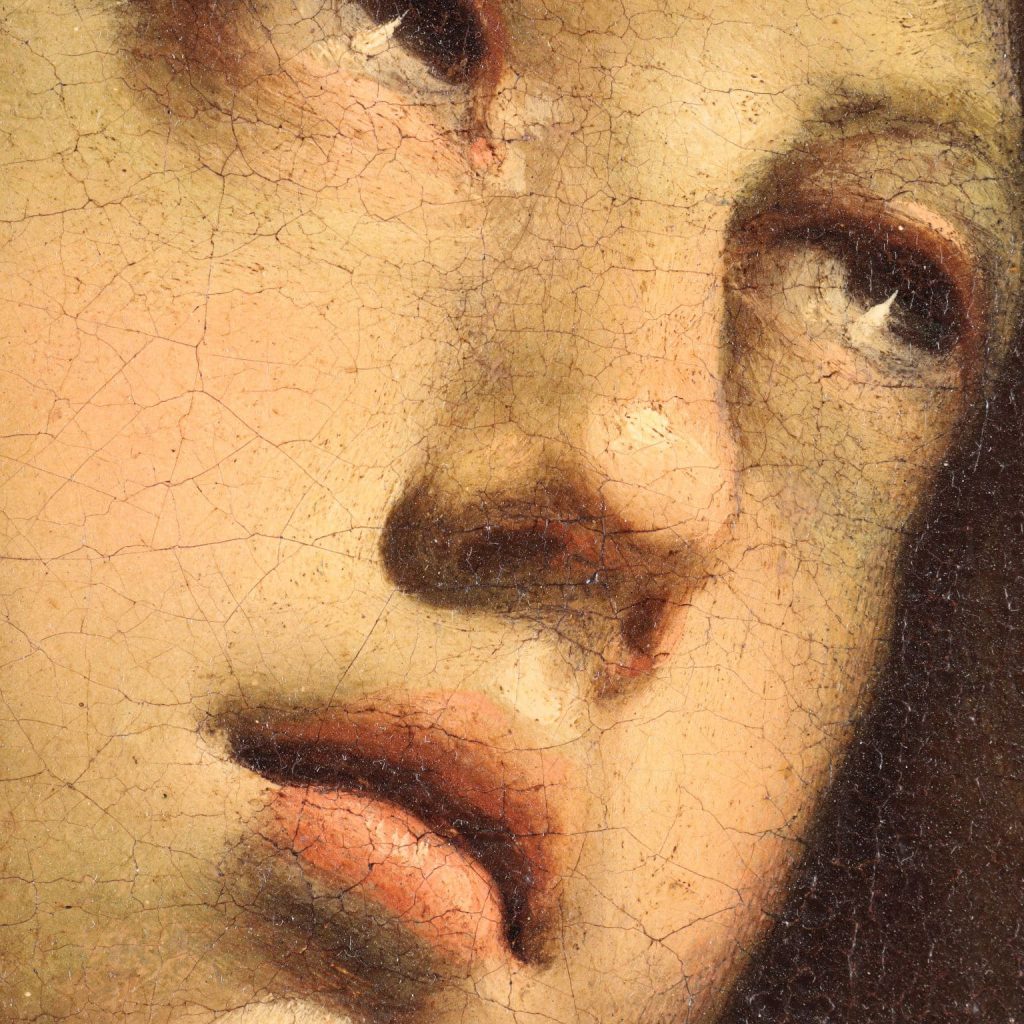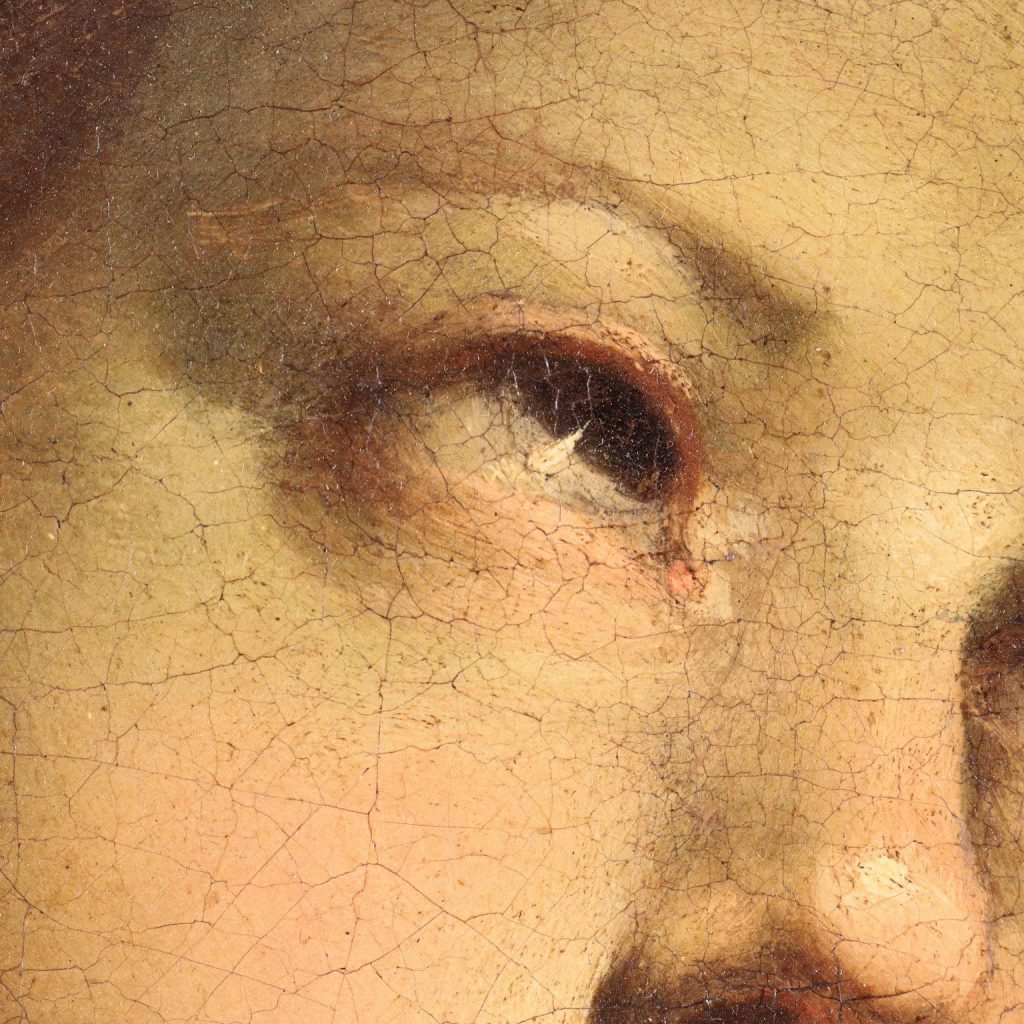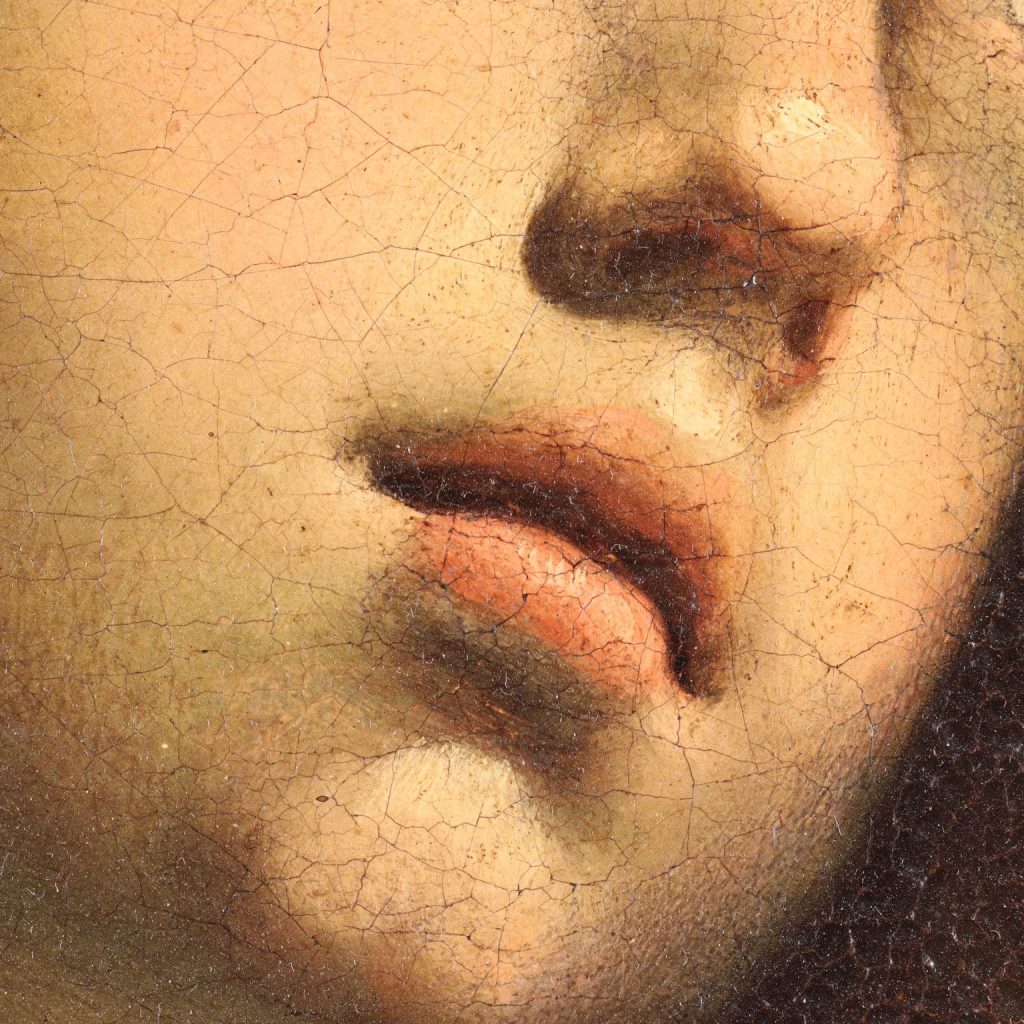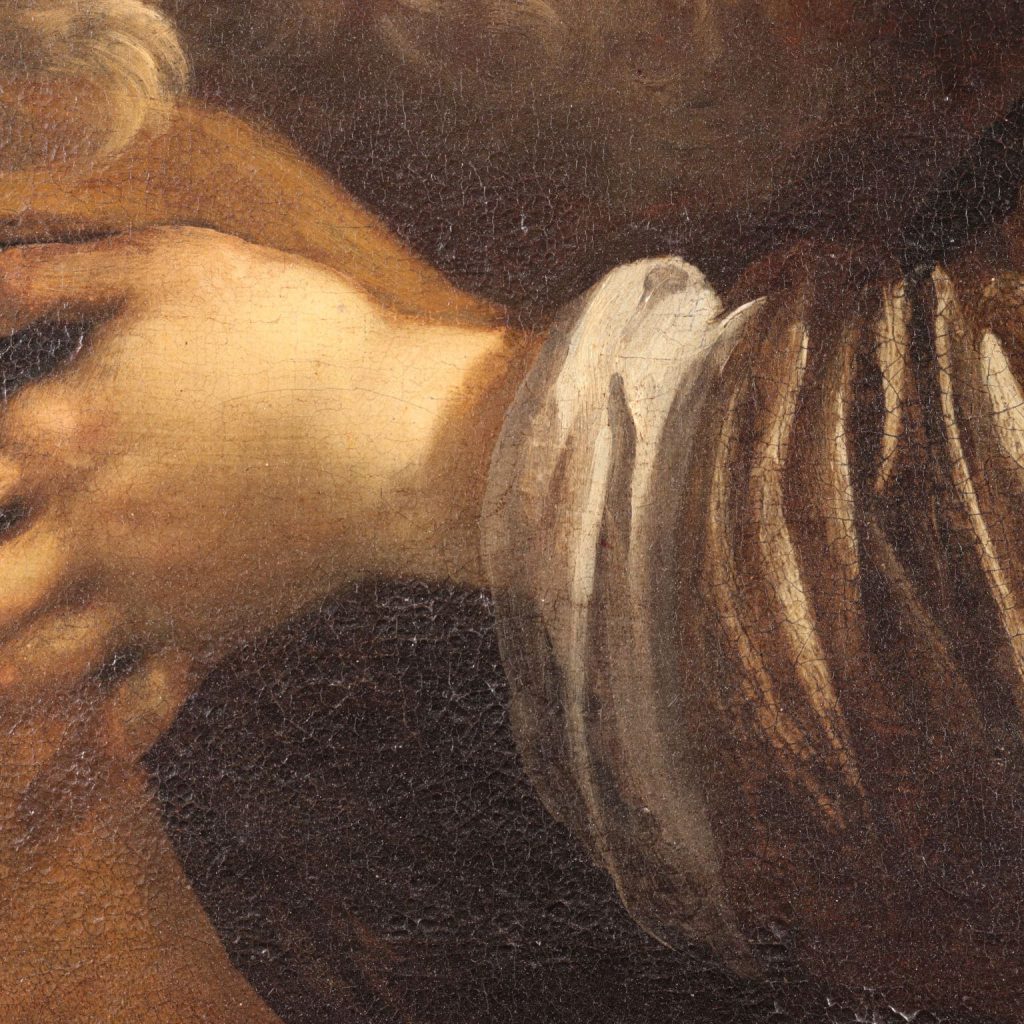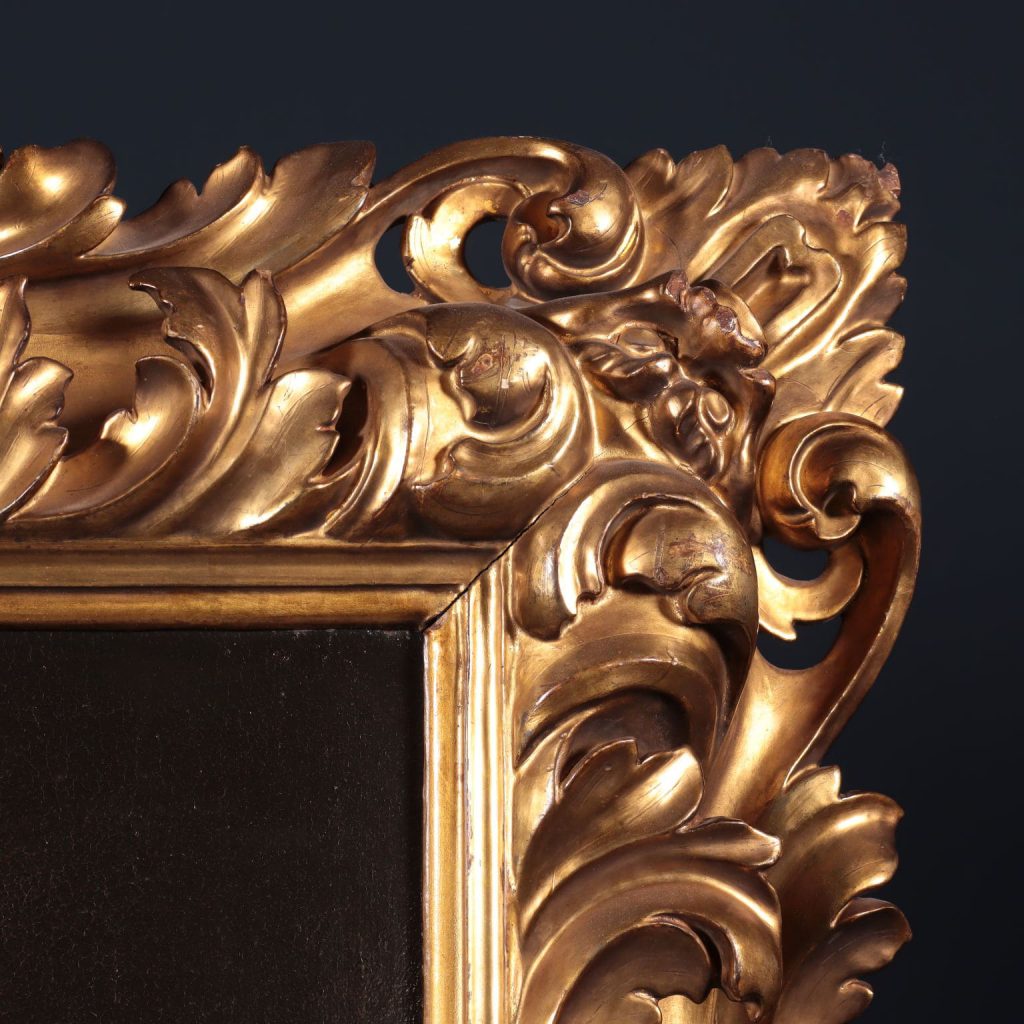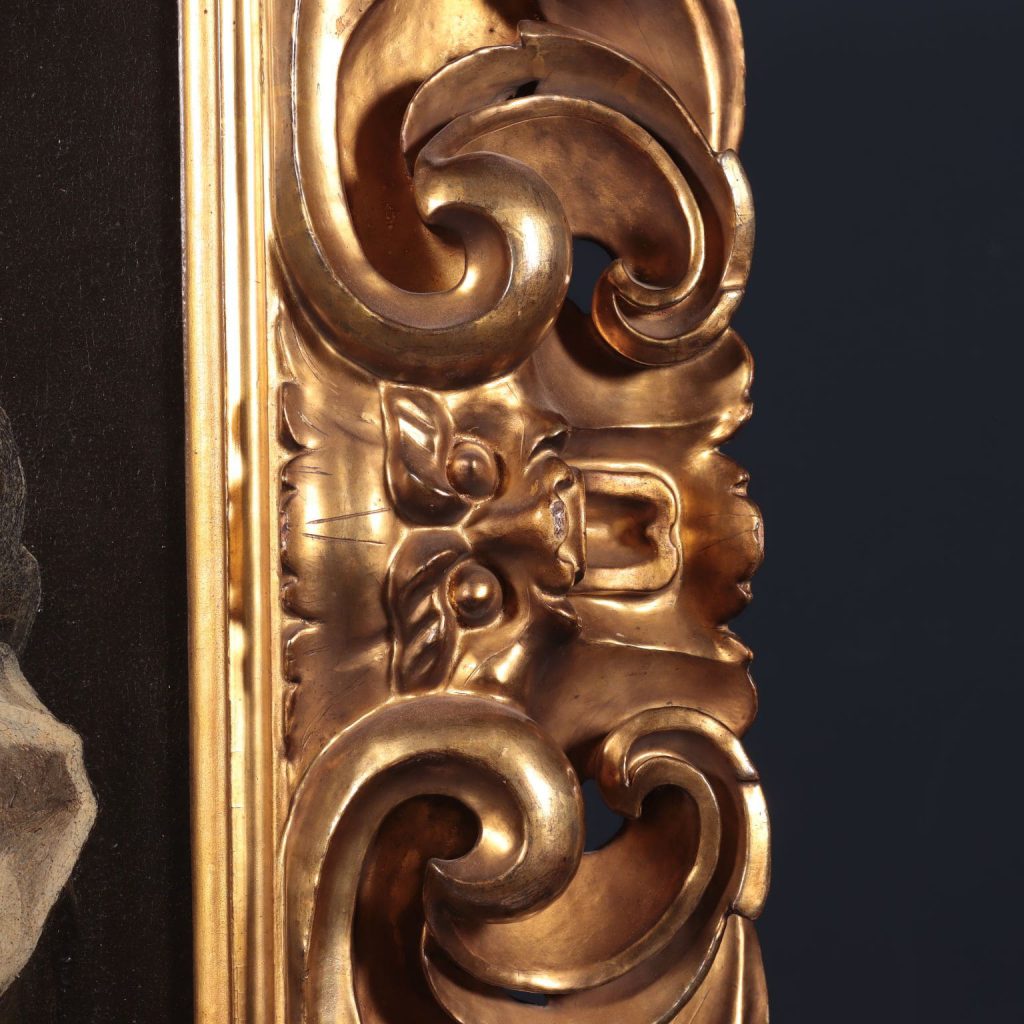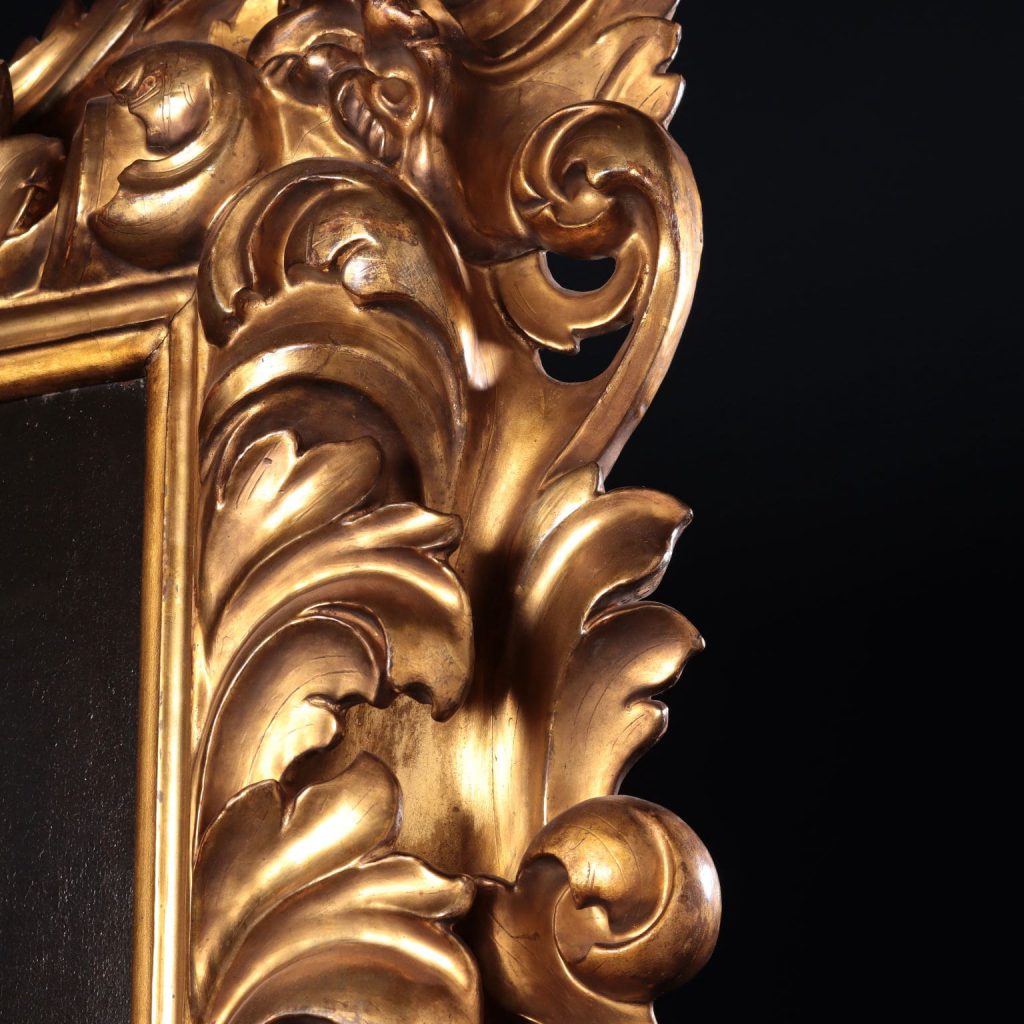Sienese area of the seventeenth century
Oil painting on canvas
Restored and relined
Description:
The scene, set in a prison, as suggested by the window with the grids at the top left behind the characters, depicts a young woman, depicted half-length, offering her breast to an elderly man, of whom only the head can be seen; the woman turns her gaze back to look over her shoulder with an alarmed expression, while with her hands she holds the head of the man she is sucking against her breast.
The painting is presented in its original frame. It is a baroque frame, made of lime wood, carved with leafy volutes and with screaming masks in the center of the sides and in the corners; the entire surface is gouache gilded.
Dimensions: 82 x 67 cm
with frame: 114 x 98 cm
Historical-stylistic analysis:
The subject known as the Roman charity refers to a legend that dates back to the 1st century AD. C., told in the book “Memorable Acts and Sayings of the Ancient Romans” by the Roman historian Valerio Massimo (1st century AD).
It tells the exemplary story of Pero, a young woman who, in order to save her father Cimone, imprisoned and sentenced to death of starvation, secretly breastfeeds him in prison. Discovered by a guard, her act of generosity so impresses the Roman officials that they allow her father to be released.
The story was since then considered an example of pietas (filial generosity) and Roman honor and handed down to posterity, in literature and art.
In the Middle Ages, the story is told by Boccaccio in the seventy-fifth chapter of De mulleribus claris, in which Pero is remembered not by name but as a young Roman.
In the pictorial field, the subject was widely taken up and depicted over the centuries. Its greatest success came from the post-Renaissance period, between the seventeenth and eighteenth centuries. Italian and Flemish painters became passionate about the theme and proposed it in their works, each translating it with their own sensitivity, emphasizing the charitable aspect, always in a profane key, and often giving it an erotic connotation, almost led to voyeurism in some cases.
The only exception is the interpretation of Caravaggio, who included the story in his “Seven works of mercy”, bringing together in the scene of the girl and the old man the two corporal works of mercy of “feeding the hungry” and “visiting the prisoners” : he removed any sensual ambiguity from the scene and charged it with a religious meaning, albeit underlining the concreteness of charity and the carnality of Christian salvation.
The subject was also addressed by Bernini, who made it a sculptural group located in the Church of Sant’Isidoro.
Attributions:
The work presented was, in 1985, the subject of study by the noted scholar and art critic Mina Gregori (attached expertise), who brought it back to the hand of Bernardino mei (1615-1676).
Sienese painter of origin, his first production is linked to the Caravaggism spread in this geographical area. Later he was active in Rome as a protege of Pope Alexander VII, where he was influenced by the Baroque, especially by Gian Lorenzo Bernini, whose highly scenographic sculpture he translated into a tendency to isolate figures in a monumental sense, often depicted with dynamic poses. matching or opposing each other.
Certainly attributed by Mei is a Charity dated 1676, with a decidedly Baroque style: in the whole figures, rather than half-length as in ours, in the movements of the almost contorted figures, in the play of light and shadow in which the vivid colors of skin tones and drapery, which create a large and lively scene.
Our work, on the other hand, is imbued with a greater intimacy, which emphasizes above all the affective dimension, the drama of feelings, presenting them in a context of colors and light effects that are not aggressive, but soft and suffused.
There is, however, another Roman charity to which ours is very close: it is the work created by Simon Vouet (1590-1649), the painter considered to be the most important French Caravaggist.
This work, until the second half of the 20th century, was known only through the many copies and engravings distributed, and the original was found only in the 1980s, in the deposit of the Riazan Museum, a city not far from Moscow, erroneously attributed to Guido Reni. Its dating refers to the last years of Simon Vouet’s Roman period, which lasted from I6I3 to I627, and belongs to the large group of “half figures” made by the artist.
The numerous reproductions of the work and its vast diffusion suggest that our painting may also have been inspired by it.
While respecting the attribution of the aforementioned illustrious scholar, it is therefore difficult today to attribute our Roman Charity in a definitive way to Bernardino Mei, but it can certainly be placed for the pictorial modalities in the context of Tuscan painting of the first half of the seventeenth century. century, to an artist who looked to the Sienese painter and other productions of the period.
- Roman charity

Antiques, Art and Design
FineArt is the new ambitious Di Mano in Mano project that offers an exclusive choice of antiques and design works, presenting them for their singularity and uniqueness.



